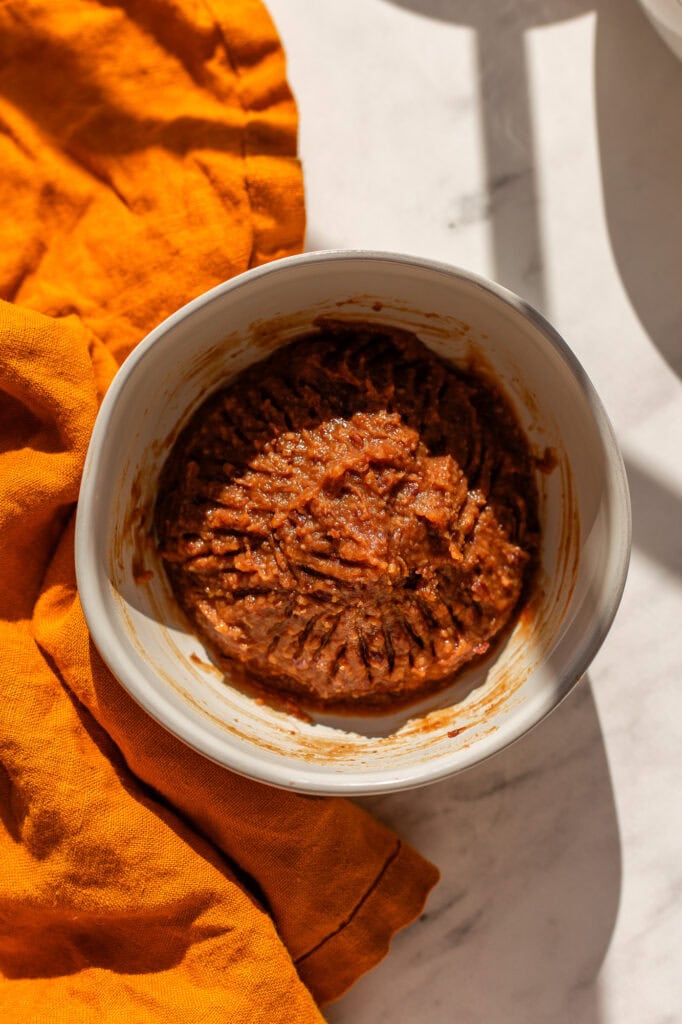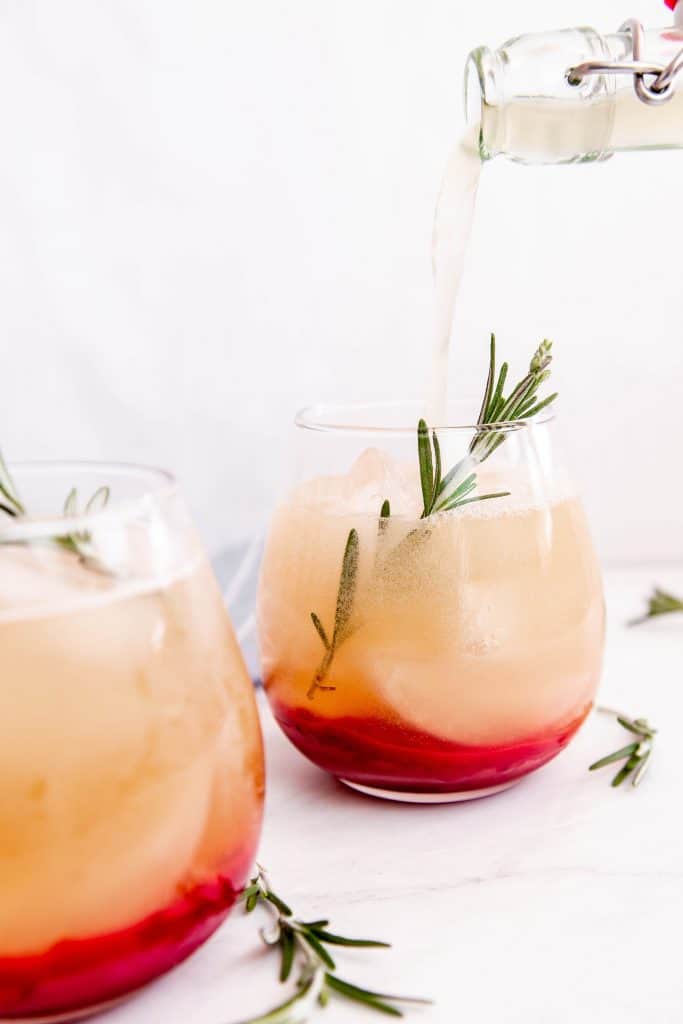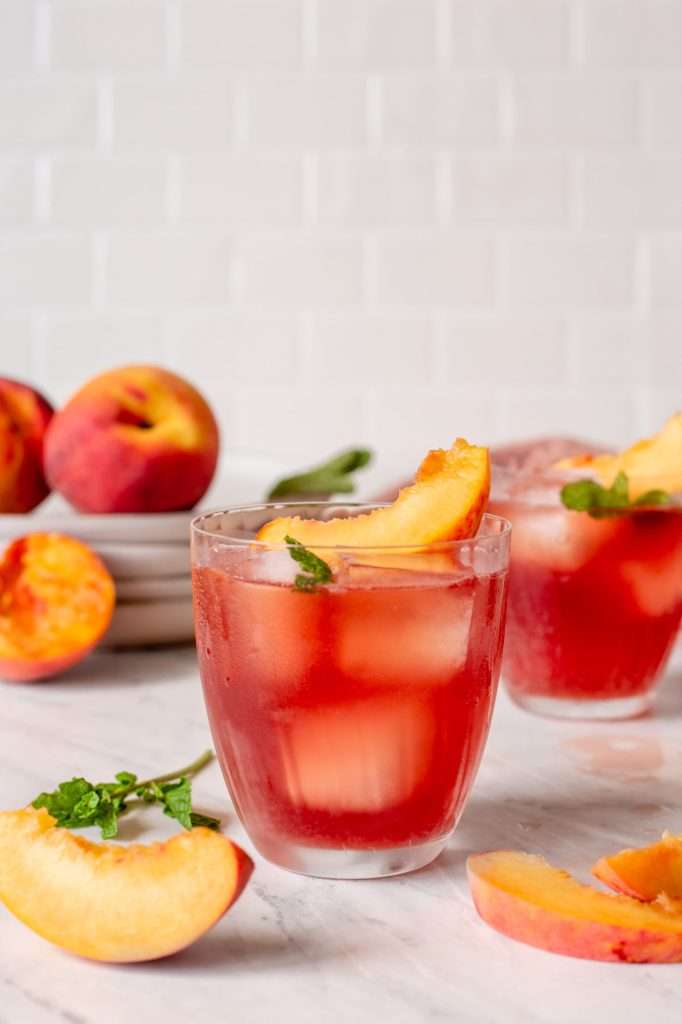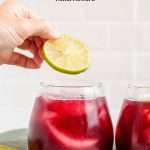Tart, citrus kombucha is my favorite! It’s fun to use as a cocktail mixer, or to drink solo. This is an easy recipe for a kombucha second fermentation and flavoring. With just three ingredients and a good bottle, you can brew this refreshing cranberry and lime kombucha.
Refreshing Cranberry and Lime Kombucha Ingredients
- Fermented Sweet Tea: This is the liquid that is fermented during the kombucha primary fermentation process (see the section below to learn more about primary fermentation)
- Cranberry Juice: for this ingredient, I used organic cranberry juice from whole foods market. It’s just basic cranberry juice that comes in a bottle.
- Lime Juice: I used the juice of one small lime to brew a quart of this kombucha. This makes the kombucha extra tart. I’m into this kind of flavor, but if you’re not this may not be the recipe for you. You’re also welcome to leave the lime out and go for a straight cranberry kombucha.

Kombucha Primary Fermentation
During the kombucha primary fermentation process, microorganisms in the kombucha SCOBY metabolize the sugars in the sweet tea. They essentially break down the sugar in sweet tea into simpler sugars like sucrose and fructose. The microbes in kombucha produce lactic acid and acetic acid, which helps preserve the liquid. CLICK HERE for our Primary Kombucha Fermentation Recipe. Our primary fermentation recipe blog also includes SCOBY care instructions, so it’s a great read to help you get started making some kombucha at home.

Refreshing Cranberry and Lime Kombucha Flavor
Kombucha’s second fermentation is where the flavor and bubble are added to the mix. During the first fermentation, sweet tea is metabolized and the liquid is inoculated with so many good microbes. Then, during the second fermentation, the liquid becomes carbonated in a sealed bottle. I like to accentuate the tart flavors of kombucha by adding citrus flavors and more tart flavors! When I’m flavoring my kombucha 99% of the time I go for a citrus flavor, and if I’m not doing citrus, I usually make something with cranberries. Maybe I’ll venture out of my super tart flavor comfort zone one day!
Kombucha Second Fermentation Supplies & Safety
For a quality second fermentation, I 100% recommend using a bale top bottle. This is the best way to achieve a good level of carbonation. Before purchasing a bale top bottle, verify from the seller that they are pressure safe and intended for fermentation. Also, you can recycle kombucha bottles from the grocery store for the second fermentation. Since the bottles are designed for high carbonation, they’re safe to use.
Other Kombucha Flavor Recipes to Try
- Blood Orange Kombucha with Sage
- Rosemary and Grapefruit Kombucha Flavor Recipe
- Cranberry Ginger Kombucha Flavor Recipe

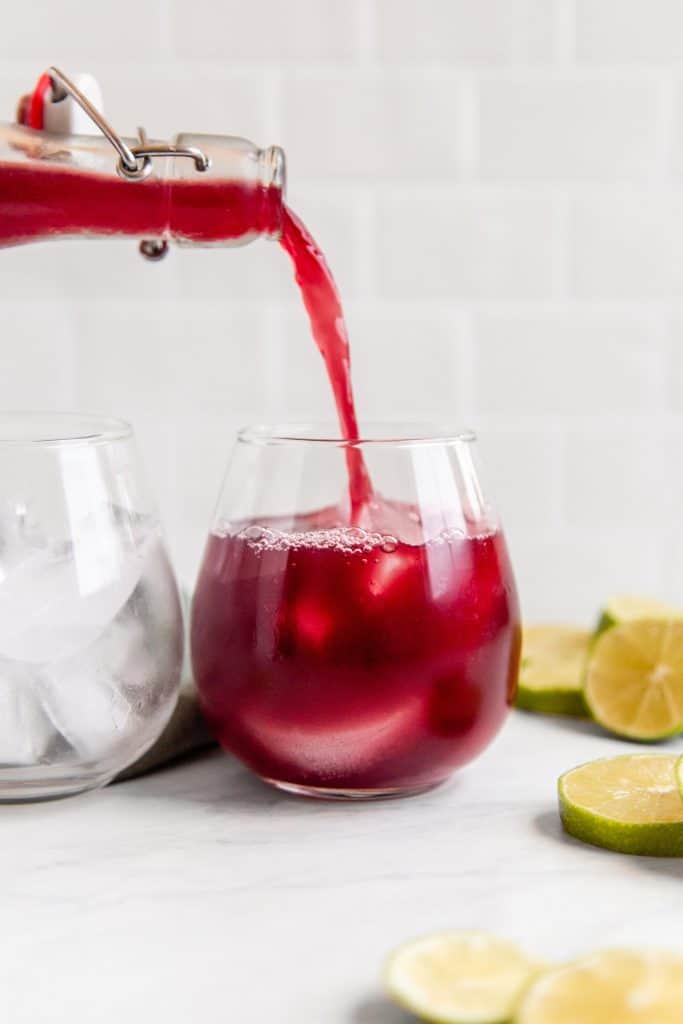
How to Brew Refreshing Cranberry and Lime Kombucha
Tart, citrus kombucha is my favorite! It’s fun to use as a cocktail mixer or to drink solo. This is an easy recipe for a kombucha second fermentation and flavoring. With just three ingredients and a good bottle, you can brew this refreshing cranberry and lime kombucha.
- Prep: 10 minutes
- Total Time: 10 minutes
Ingredients
- 1 Quart Fermented Sweet Tea
- 1/2 Cup Organic Cranberry Juice
- 1 Lime, Juiced
Instructions
- In a saucepan over medium heat, bring the cranberry juice and lime to a boil and simmer for about 5 minutes.
- Remove the cranberry lime mixture from heat, and allow it to cool.
- Using a funnel, fill your pressure-safe, swing-top fermentation bottles 3/4ths of the way full with fermented sweet sweet tea from your Kombucha Primary Fermentation.
- Top off the bottle with the cooled cranberry lime juice mixture, leaving about 1/2 inch of headspace.
- Allow fermenting at room temperature (70-80° F) for 3-7 Days. Then refrigerate for 24 hours.
- Open the bottles carefully over the sink. Place one hand firmly on the cap before opening the metal swing closure.
- Pour over ice, garnish with fresh lime slices and enjoy!
Notes
*for an extra fizzy kombucha, you can allow the second fermentation to proceed for up to seven days. Be cautious though, you don’t want the bottle to explode.






